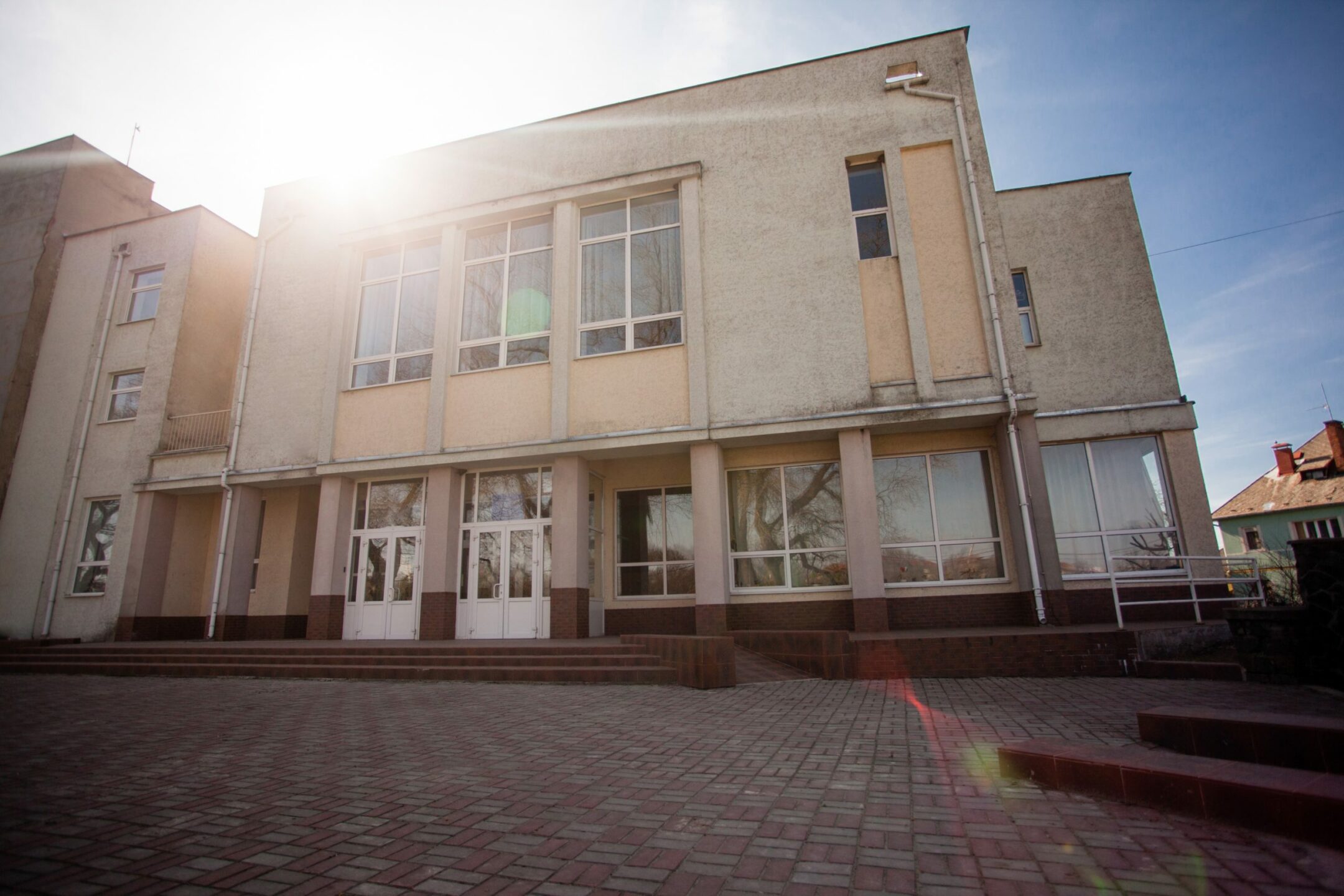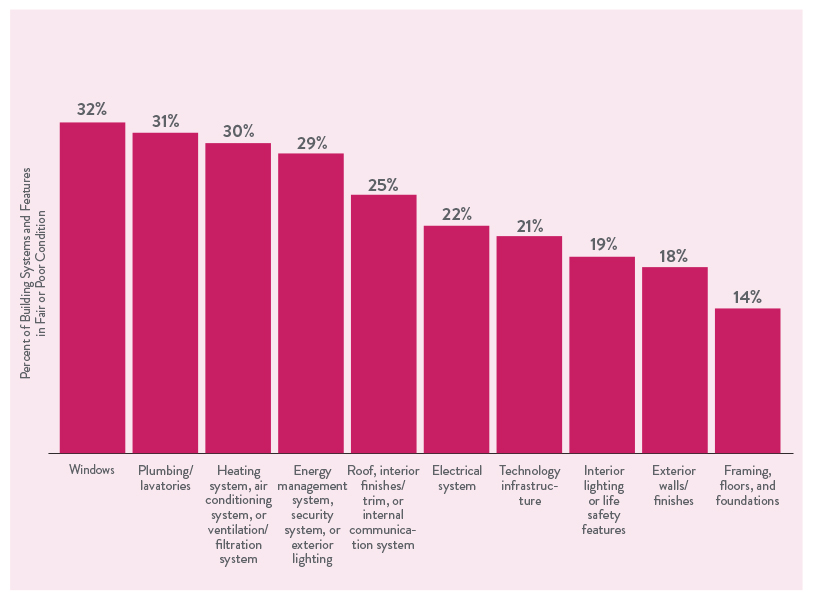Georgia, Inland Waterways, National Category
Startup Uses Drone for Cleaning Water, Collecting Data


School facilities represent the second largest sector of public infrastructure spending, after highways, and yet there is no comprehensive national data source on K-12 public school infrastructure. What data is available indicates that 53% of public school districts report the need to update or replace multiple building systems, including HVAC systems. More than one-third of public schools have portable buildings due to capacity constraints, with 45% of these portable buildings in poor or fair condition. Meanwhile, as a share of the economy, state capital funding for schools was down 31% in fiscal year 2017 compared to 2008. That is the equivalent of a $20 billion cut. The best estimates indicate a minimum of $38 billion annual funding gap for public school facilities across the country. Meanwhile, public schools often serve a secondary function as emergency shelters and community resource facilities during man-made or natural disasters, and facility upgrades are needed to effectively fulfill this important community purpose.
Download Reportpublic schools with nearly
100,000 buildings in the U.S.
of schools reported issues with
HVAC systems
do not have a
long-term facility plan

There are approximately 84,000 public schools with nearly 100,000 buildings in the U.S. with a projected enrollment of 56.8 million by 2026. Every community across the U.S. has public school buildings and facilities. They are used not only for learning, libraries, sports, and feeding children, but also for community meetings and as emergency centers and shelters. To provide a safe and healthy environment that is conducive to learning for children of all ages, school buildings need to be in good condition and provide adequate spaces, natural light, working heating and air conditioning, clean water, and modern technology to fulfill a host of other functions.

State and local governments face a constant challenge to keep pace with operations and maintenance and the need for new school construction, in addition to accommodating improved health and safety standards, stronger accessibility requirements, and new technology. Great strides have been made in infusing technology into schools and into the instructional process. Some school districts have invested heavily in the infrastructure required to accommodate technology. As the COVID-19 pandemic illustrated, investments in technology are critical to ensure continued learning, yet despite progress, many school districts have not been able to keep pace. Meanwhile, school districts need to upgrade HVAC systems and add capacity to classrooms with outdoor classrooms, temporary buildings, or leasing new space, all with limited budgets.
The GAO estimates that while 65% of school districts have assessed their facilities within the past 10 years (86% of those do so yearly), 16% of districts have not done so within the past 10 years. Planning is often lacking, as four in 10 public schools do not have a long-term facility plan in place to address operations and maintenance. Better planning through life-cycle cost analysis will lead to a better allocation of resources. Such analysis should review costs associated with planning, funding, design, construction, operation, maintenance, and decommissioning.
An estimated 55% of districts use local revenues as their primary source of funding for school facilities, compared to 36% that use state funds. The most common source of local funding is property taxes, which are used in 77% of school districts. Other local funding comes from grants, bonding, other taxes, and public-private partnerships.

To serve their primary purpose and provide a safe and effective learning environment for the nation’s K-12 students, public schools need to be in good condition.
The U.S. Department of Education should coordinate with state agencies and local school districts to obtain and publish nationwide statistics on school infrastructure at regular intervals.
School districts should focus on Life-Cycle Cost Analysis (LCCA) principles in the planning and design processes to evaluate the total cost of projects.
Design new campuses for the lowest net present value cost that includes lifecycle O&M in addition to capital construction.
Implement building condition assessment of existing school infrastructure.
Budget for the total cost of ownership and train facilities staff to implement these policies.
School districts should develop capital planning frameworks that can be nimble and responsive to changing technologies and demographics, in order to optimize learning environments and consider the holistic needs of the community.
Continue to encourage school districts to adopt regular, comprehensive major maintenance, renewal, and construction programs, and implement preventive maintenance programs to extend the life of school facilities.
Explore alternative financing for public school facilities, including lease financing, as well as ownership and use arrangements, to facilitate school construction projects.
21st Century School Fund Inc., U.S. Green Building Council Inc., and the National Council on School Facilities, “State of Our Schools: America’s K-12 Facilities,” 2016.
Institute of Education Sciences, National Center for Education Statistics, “Projections of Education Statistics to 2026.” April 2018.
Congressional Research Service, “School Construction and Renovation: A Review of Federal Programs and Legislation,” updated August 31, 2020.
U.S. Department of Education, National Center for Education Statistics, Institute of Education Sciences, “Condition of America’s Public School Facilities: 2012 –13,” NCES 2014-022, March 2014.
K-12 Education: School Districts Frequently Identified Multiple Building Systems Needing Updates or Replacement,” file:///G:/GRA/Word/Report%20Card/2021%20Report%20Card/Categories/Schools/GAO%20Report%20June%202020.pdf GOA-20-949, June 2020.
Center on Budget and Policy Priorities, “School Infrastructure Needs a Funding Infusion.” April 17, 2018.
21st Century School Fund Inc., U.S. Green Building Council Inc., and the National Council on School Facilities, “State of Our Schools: America’s K-12 Facilities,” page 4, 2016.
PHOTO ATTRIBUTIONS
Photos courtesy of Kevin Longley, Emily Feenstra, Maria Matthews, and Brian Pallasch
